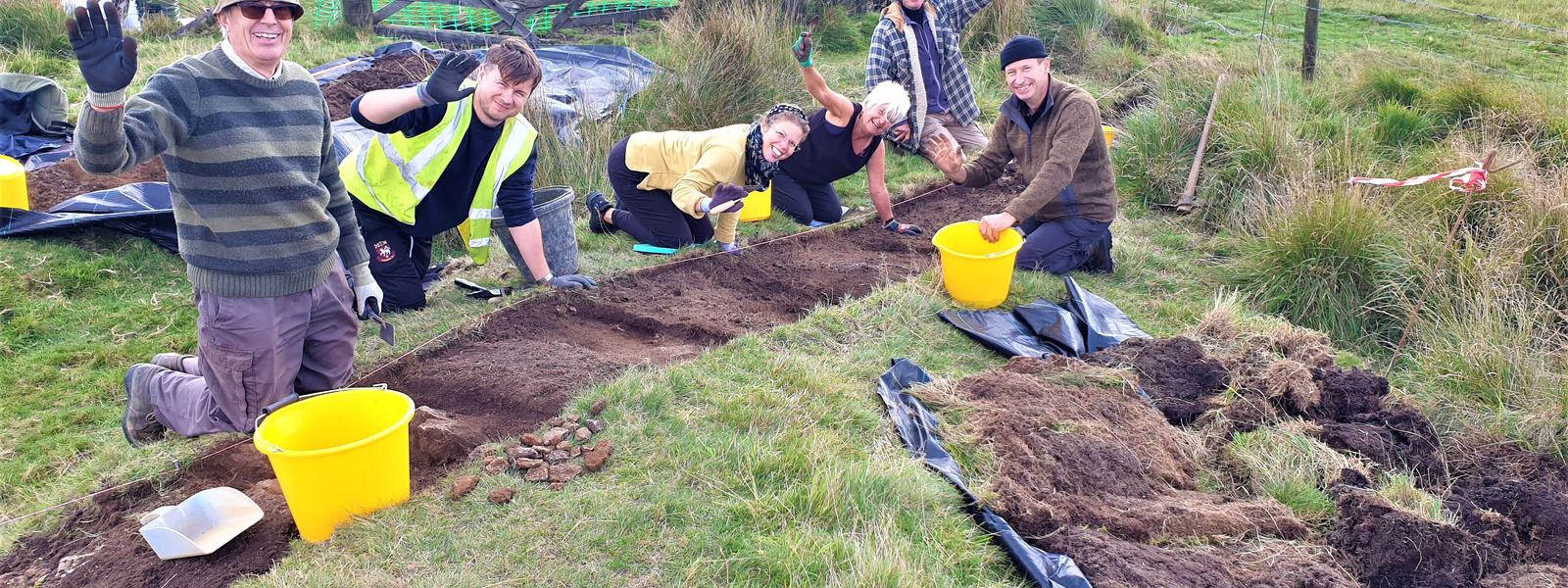Volunteers support efforts to secure future for monument
In September 2022, the Cornwall National Landscape’s Monumental Improvement project worked with the Cornwall Archaeological Unit to conduct an excavation of King Arthur’s Hall, an at-risk Scheduled Monument on Bodmin Moor. The team, supported by volunteers, carried out a small investigative excavation in order to understand more about the age of this enigmatic site which will ultimately help to inform its future management.
This excavation and the scientific analyses were made possible thanks to funding from The National Lottery Heritage Fund through the Cornwall National Landscape’s ‘A Monumental Improvement’ project, Historic England, Cornwall Council and Cornwall Heritage Trust. With thanks and support from the landowner and Hamatethy Common, Natural England, Cornwall Archaeological Unit, specialist teams from the Universities of Reading, St Andrews and Newcastle as well as amazing local volunteers.
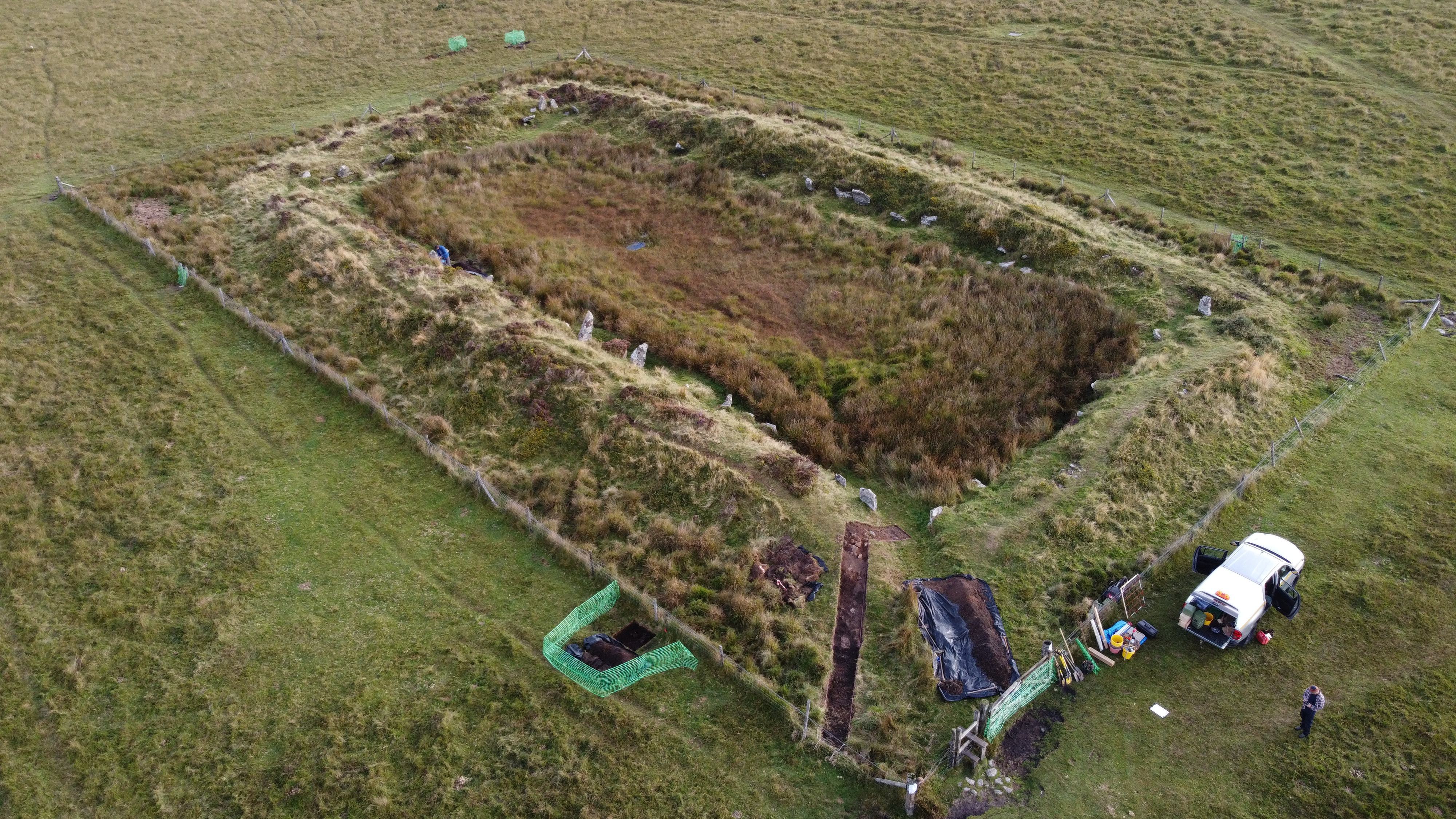
Aerial image of King Arthur's Hall
The site, which is a scheduled monument, is a solitary structure in a remote area of common grazed land on Bodmin Moor. It consists of a rectangular bank of earth and stone, measuring 21 x 49 metres internally, formed with 56 orthostats (standing stones) surviving on the inner face of the embankment, some measuring up to 1.8m, which are either leaning, recumbent or partially buried.
The excavation was undertaken with help from enthusiastic local volunteers and the dating for the excavation was carried out by specialist teams from the Universities of Reading, St Andrews and Newcastle using multiple dating methods. Optically Stimulated Luminescence (OSL) dating was used to test and examine material from a section dug through the bank and into soils buried beneath it to determine when the structure was built. Dating from the OSL analysis indicates the structure was constructed in the later fourth millennium BC over 5,000 years ago (Neolithic Period).
In addition, samples were taken from the interior of the monument to establish the presence of fossil plant and animal remains such as pollen, seeds, insects, and parasite eggs within the sediment. These core samples were radiocarbon dated and revealed that the infilling of the monument began in the Later Prehistoric (2,000 – 2,500 years ago) and medieval dates (500 – 1000 years ago) for monument activities that affected the marshy interior of the enclosure. These activities, which might have included use as a pound and then as a reservoir used in tin streamworking, were probably quite different from those intended by the enclosure’s first builders thousands of years before
The Historic England listing for the site denotes it as a Medieval animal pound but the dating results confirmed that it was constructed in the Middle Neolithic Period (5000 to 5500 years ago), 4,000 years earlier than previously thought. There has long been speculation that the monument could be a prehistoric structure, due to the standing stones, its north-south orientation and its position in a part of Bodmin Moor with many other early sites but now there is the dating evidence to confirm this.
Geological examination of the standing stones suggests that they came from within 250m of the site and were possibly dug out from the interior rather than from a distant tor.
Although there are rare henge monument forms elsewhere where banks are lined with stones (e.g., Grange Circle, Lough Gur, Ireland) or Meini Gwyr, Wales), these sites are circular which makes the monument highly unusual, if not unique. Rectangular monuments do exist in Brittany (e.g., Crucuno), but without the enclosing banks. Possible uses in the later fourth and third millennia BC may have included gatherings of local communities for ceremonies and rituals, but as the site is so unusual, its original purpose remains uncertain.
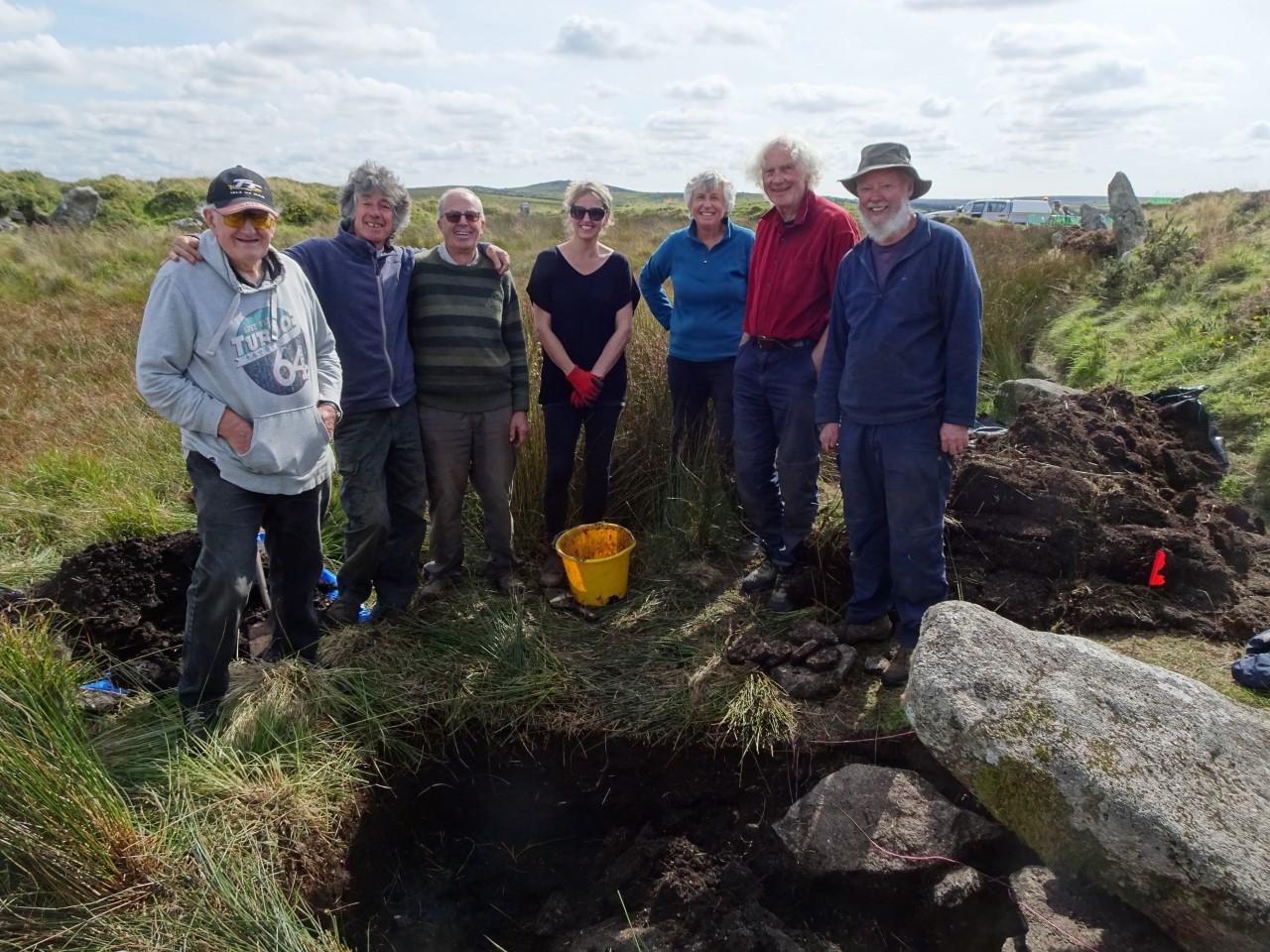
Volunteers gave their time to enable the study to happen
2022 – Excavation and events
Confirmation of the monument’s original construction within the Neolithic period will help the Monumental Improvement project team, Historic England and many others to better understand the site. As a unique and ancient site, it needs very special care and attention to preserve its significance for future generations to enjoy.
A management plan for the site is being developed in partnership with Historic England, Natural England, the landowner and the Hamatethy Commoners, the first step of which has been to replace the fence surrounding the monument which had fallen into disrepair, to prevent erosion from cattle.
Cornwall National Landscape’s Monumental Improvement project will also be creating interpretation for the site to help visitors better understand its significance. This will include digital interpretation on the Cornwall National Landscape’s website so that more people can access and explore this unique piece of history.
- Engaged 15 Local Volunteers
- Engaged 144 people through Outreach events
- 8 outreach events delivered
- 3 Universities engaged
- 2 local volunteer groups engaged
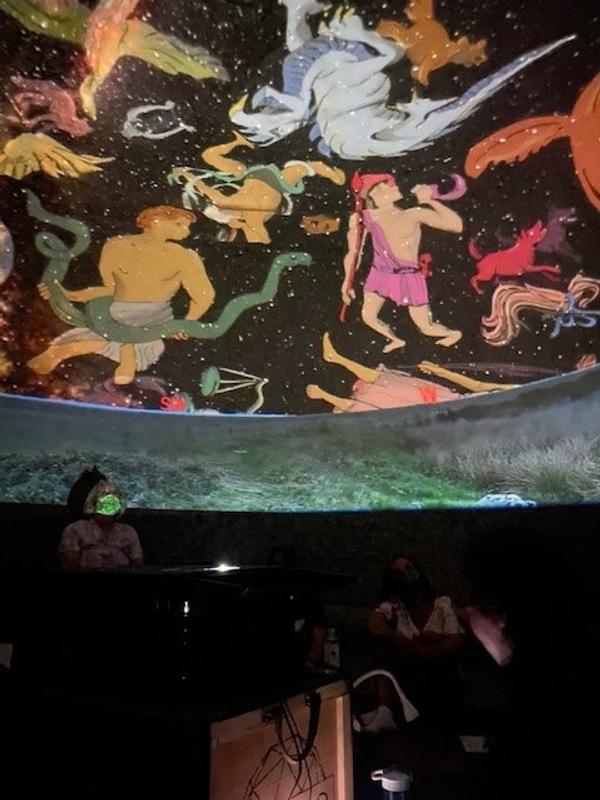
A Planetarium experience was one of the outreach events for local people
2024 – Dating results released
- 715 Social Media engagements
- 29 Online/Print media articles shared by various outlets (including The Guardian, BBC News Online and ITV Online)
- 3 interviews with local media outlets
- Monument removed from Historic England’s Heritage At-Risk Register
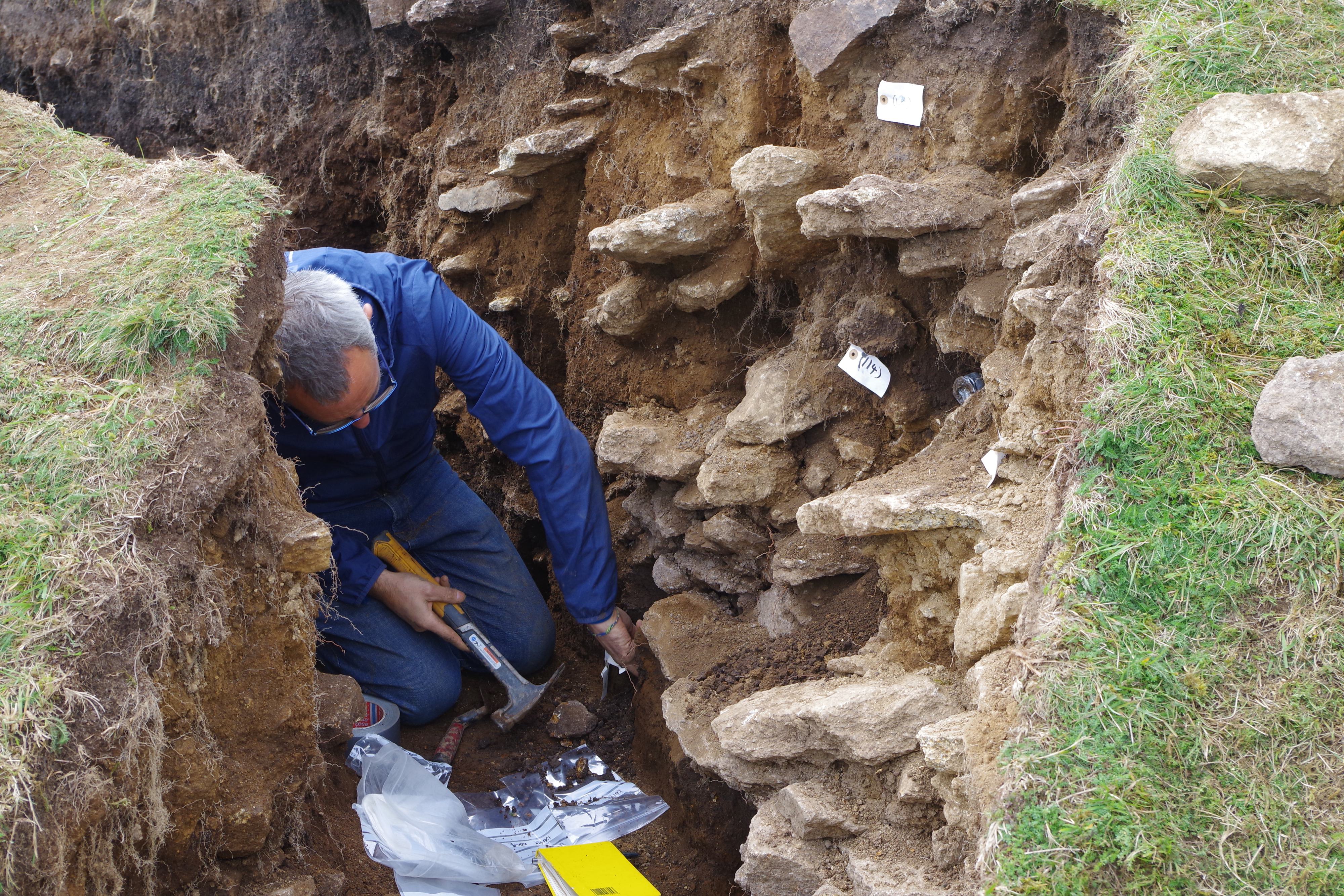
Dr Tim Kinnaird took samples to date the monument
